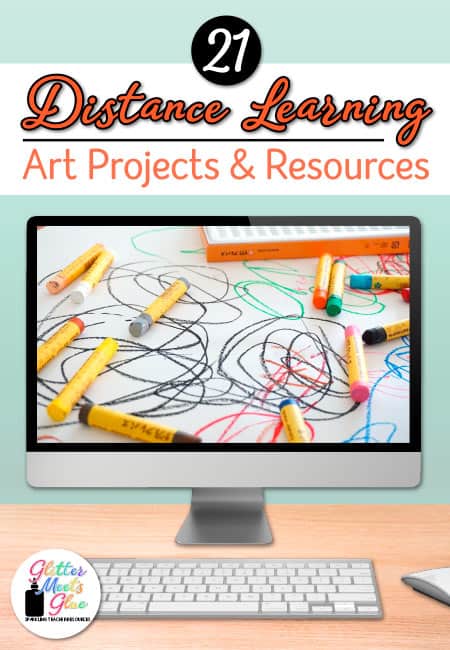
Distance learning is not new. Colleges have been doing it for years. And there are even online schools for elementary and secondary students in place of traditional brick and mortar schools. And yes, they have art teachers doing art projects with kids.
Yet, many art teachers around the globe will have to deliver instruction this way for the very first time due to inclement weather, school closures, or other extenuating circumstances.
And whether your school calls it distance learning, remote learning, e-learning, or online learning, likely you’re quickly figuring out how challenging it can be. Art ideas for online learning: whoever thought we’d need this?!
Home-based learning requires not only a broad sense of technology (internet, video conferencing, Google Classroom), but a new skill set for delivering instruction. Ever watch yourself on video give a demonstration?
Every breath, twitch, eye roll, and mispronounced word feels like the longest moment in time. If you’ve recorded yourself for a teaching portfolio, you know what I mean!
But for art teachers who deal with physical materials, teaching via distance learning can be downright difficult.
It leads to practical questions like, “How do I relay content to my students?” And “How am I supposed to take attendance and grade them?” to “What the heck am I supposed to teach them?”
Quick Links
- Adaptive Distance Learning Policies for Art Teachers
- Best Practices for Distance Learning
- 21 Distance Learning Art Projects for Kids
- Issues Handing in Artwork During Distance Learning?
- Conclusion on Distance Learning
Adaptive Distance Learning Policies for Art Teachers
And yet, art teachers are the most adept at creating amazing art projects on the fly with little or no resources available. I think it’s the nature of what we do. We’re creative beings. We see art in everything because everything is art to us. Scraps normally thrown in the trash are our treasure. And nature provides a heaping amount of tools, materials, and inspiration, too.
As artists, we’re also used to restrictions. Any teacher who went to art college can relate to being given an assignment on short notice with few or no materials. Or even strict requirements for a project that while constraining, helps bring out amazing ideas due to those constraints. So while distance learning might seem like a high bridge to cross, it’s not impossible. With some tools, tips, and advice, anything is possible.
Best Practices for Art Project During Distance Learning
Before I get into some of the ideas for actual art projects, I’d like to address some best practices for distance learning. These tips are meant to make your journey into remote learning more successful.
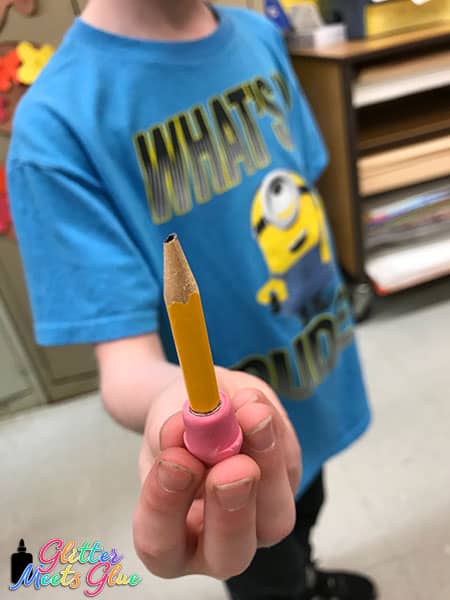
Art Materials
Art teachers should be writing lessons assuming that some children will have nothing but a pencil. That doesn’t mean you should only provide pencil and paper ideas, because some will have more. It just means you need to think about the lowest common denominator in terms of available materials and work from that point forward.
Some of the ideas below will work for many teachers and students and some won’t. Your students might live in an apartment building in a city and can’t get ahold of found objects in nature.
Other students could be in a situation where they’re living between two homes. What’s available at one home isn’t at the other. The idea here is to know your students and what items they can find for art projects.
A word about equity. When considering projects that require the use of food, avoid making those art projects required. You will no doubt have a student whose family struggles financially.
Using food as a required source for lessons sets up some students for failure. Be sure to encourage your students to ask permission to use any food items.
Workload for Art Projects
Keep your lessons simple. The easier they are, the greater the chance students will do them. Remember: they’re at home. Think about how you are at home. Do you want to be all cozy in your pjs, curled up on the couch, and have to think about a huge pile of work that’s due?
Be realistic about your expectations. The longer they are in a remote learning situation, the less you should expect of them. If your school is closed for a couple snow days, reduce the work a little. If you’re out for a whole month or more? Even more so. What you might accomplish in a once a week art class, you should expect it to take 2 – 3 times as long depending on the complexity of the assignment.
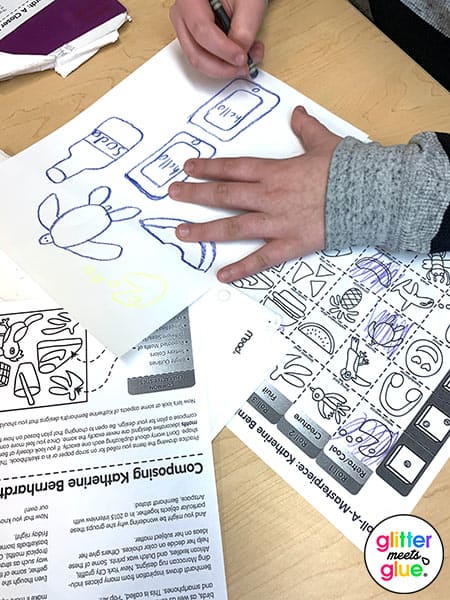
Low Tech Art Projects Best
I’d like to state that now isn’t the time to teach students about new technologies your students don’t already use. Yes, you as the art teacher might be learning some new instructional technology to deliver your art projects, like designing a virtual Bitmoji classroom.
You might need to pick up some basic video editing skills using phone apps. Or how to mount a phone camera to shoot overhead video.
You may even be told you have to get on learning about Google Classroom (and actually use it!). But don’t expect students to spend time learning new technologies while distance learning. Your focus should be getting content to them.
Some art museums have opened their virtual doors to teachers, students, and parents. And you should absolutely take them up on these learning opportunities. Just don’t make it required.
You will have students who have to share their device with a sibling and likely a parent(s), too. They may not even have a good internet connection (or one at all). In these instances, refer to your school district’s distance learning policy. You may have to deliver packets or make pre-recorded phone calls to get the instruction to them. Some schools have robocalling software like Honeywell that may be a viable option for you.
Consistency is Key
Whatever means you decide to deliver instruction, whether that be via unlisted YouTube videos, Zoom meetings, or paper packets, be consistent. Kids need to know where to find your assignments and how you’ll engage with them.
Your school district likely has guidelines on instructional delivery and you should absolutely follow them precisely. Just be consistent about it so kids can be successful in this new learning environment. The last thing you want is a parent emailing you stating that their child didn’t hand the work in because they didn’t know where to locate your assignments.
Relax Deadlines
I’m going to say something a tad controversial here. Not every school administrator will understand what it’s like to be a “specials” teacher with 700+ students or have to work in two or three school buildings. They don’t walk in your amazing shoes every day.
You’ll receive lofty guidelines and expectations to follow. They might tell you to check for work every week, count that as attendance, and update your weekly grades with online grading software.
But can I just say? It’s more important for you to be flexible in tough times than it is to follow some of those well-intentioned “rules.” Now, you might feel uncomfortable because I just basically told you to look the other way. But really, I’m asking you to think about what’s best for your students and advocate for them.
Not every child is living in a scenario where their parent is going to care if they did all your art projects. I’m not saying don’t eventually mark a student as not having handed it in. But be flexible with assignments, deadlines, and quality of work. And expect a lot of stick figures and corner suns.
21 Distance Learning Art Projects for Kids
One approach which I highly recommend is to create a choice board or menu where students can pick from different activities. On that choice board, at least half should be simple drawing activities where students have the opportunity to embellish with crayons, colored pencils, or markers if they have those things available. The directions that accompany your menu or choice board should clearly state this.
Other projects for your distance learning choice board should be based on found objects and recycled materials. I think this is a great opportunity to highlight artists from the past, like Marcel DuChamp, as well as modern artists like Rebecca Louise Law who is a floral artist.
Famous Laundry Art
Students can use clothes – old t-shirts, sweatshirts, pants – to compose a famous painting! The best part is that nothing is cut and therefore nothing gets wasted. The first step is for students to do a bit of research on famous, recognizable paintings. I recommend they pick ones with bold shapes and basic colors. This is a great opportunity to send them through a virtual museum tour. Many art museums have online tours students can take.

Homemade Scratch Drawings
This was one of my favorite things to do as a kid! And this is a great idea for parents who have a lot of old crayons that are down to stubs. Basically, they just have to apply the crayon heavily so it builds up a waxy layer. Any sharp object can be used to scratch with. I recommend the large sized paperclips as they’re a little more sturdy than the smaller ones. But tacks and very small screwdrivers work, too! The best part is that if they do something they don’t like, they can color over it with black and try again.

Marker Painting
I love marker painting! I first discovered it many years and quite by accident. Since then, I’ve used it for many art projects. Basically, kids can draw a picture and outline their shapes with markers. Then, they dip a brush into water and smudge it into the marker strokes and it makes paint!

Shadow Puppets
This is a great opportunity to teach students about the element of art called shape, as well as some basic photography composition. Kids can use any type of paper they want. The best for this would be black construction paper. But if they don’t have that, the front or back cover of a magazine or even condensed cardboard cereal boxes will work. First, cut out and design some kind of creature. Then tape it to a string or a pencil. Shine a lamp or flashlight to the creature against a wall and snap a picture.

Found Objects Color Wheel
If your student’s parents are clamoring for ideas to keep them occupied, this will do the trick! The idea here is kids will search the house and gather items that fit into each color on the color wheel. Objects don’t have to be completely one color to fit into a color family. But they should be mostly that one color.

Nature Imitating Art
If your students are able to get outside and have access to trees, dirt, leaves, sticks, and anything else nature provides freely, then they can create art! Kids are inherently great at this. Out of boredom they’ll start drawing in the dirt with a stick, or build a snowman, or even create a fort from old branches. Have students gather whatever natural materials they can find and compose a picture. Encourage them to look at the shapes and see what’s unique about them. Or have them do a leaf rubbing. They can use leftover copy paper and crayon stubs.

Creativity Warm-Up Drawings
Here’s a great activity for students to do if all they have is paper and pencil! It really challenges students to use their creativity to figure out what the marks in the box remind them of and make a drawing based on it. You can grab a copy here:

Homemade Paint
There are so many ways kids can make paint including coffee, tea, fruit juices, spices, food coloring, old markers, and even mud! Have kids test out mixing some of these materials with a little water to see what results they get. The first week’s activity could be to make a chart followed up by a simple picture of an object like an apple or a boat.
Dont’ have paintbrushes? Improvise! Your students can use q-tips, cotton balls, old makeup brushes, toothbrushes, toothpicks, feathers, skewers, and even grass. This is a great opportunity to teach them about mark making. Anything can make a mark and can be used as a tool to make art. Cutting up scraps of cardboard to make a comb or using old sponges. Really, anything can make art. Your lesson can be based on forging tools for art making!

Cartoons with Props
Here’s a basic project that uses an everyday object as a prop. It can be anything small like a penny, a pencil stub, a tack, dried pasta or beans, or a paperclip. Students can draw a series of drawings using that small object. This would work well for 2nd grade and up.

Digital Art Projects
Not all art has to be created physically. You can teach the same elements of art and principles of design using digital platforms like Google Drawing, Tate Paint by Tate Kids, Sketchpad.io, and Pixilart. Even Google Slides, which is popular amongst many general education teachers, would work. Plus, since they’re likely already using it, they know some of the features and you don’t have an uphill battle in trying to teach them a new technology. Again, know your students. If they don’t all have internet access, this may not be a viable option.
Kids can practice drawing basic lines and shapes to start with. Then learn how to color, rotate, flip, and group shapes. I’ve been making many of these digital art lessons (for general ed teachers) and digital art history lessons (for art teachers) for distance learning which practice these skills. And they’ve been a hit with kids of all ages!
What I really love about the art history ones is that some or all of the pieces can change color, giving kids greater autonomy in creating their virtual art project.
Cardboard Robot Sculptures
Cardboard is one of those materials that families easily have on hand. Why not turn it into fun art? Kids can make low relief and free-standing sculptures easily. Parents can cut cardboard into manageable strips so kids can cut them to size.

Newspaper and Magazine Collages
Design a fantasy world, crazy creatures, or whatever comes to mind. They will need to ask permission to cut up magazines and newspapers, first. Give them creative permission to include any other art materials they wish. They can even cut some things out and free draw other parts and collage them together!
If your students don’t have access to materials, why not try to create a digital collage using Google Slides? First, they can search the internet for a background image and place it in the background of the slide so it doesn’t move. Secondly, they can select pictures from online or on their device and use the remove.bg website to delete its background. Then, they can upload the images to Google Slide and arrange them creatively.

Meme That!
Take a famous painting, upload it to Padlet (which can be connected to your Google Classroom) and have students caption it. Include a link to a site where they can read more about the painting.
Alternatively, you could provide them with a painting and have them use a free online meme generator and hand it in via Google Classroom. Your students will love out-doing each other for the funniest meme.

Isometric Drawings
Your upper elementary and middle school students will love making isometric drawings! You can find free isometric drawing grid paper online. Have students practice making cubes, rectangular prisms, alphabet letters, etc. If all they have is a pencil, that will work. Crayons, markers, and colored pencils are great for embellishing. Use it as a lesson to teach upper elementary students about value using stippling, hatching, and cross-hatching. Kids will really buy into how games like Q-Bert (yes, some of them still know this game!) and Minecraft are derived from isometric graphics.

Found Object Art Names
This one is as simple as it looks. Ask students to gather small items from around the house to compose a picture of their name. The longer the name, the more space they will have to prepare for it. This can lead to a project where students draw out a whole alphabet – or their initials – using everyday objects that they love.

Digital Art Portfolios
If you teach middle school, making digital portfolios is a great activity that requires no art materials! Many middle schoolers already know how to use Google Slides because they use it in other classes. And if you already have students taking pictures of their artwork and uploading to Google Classroom, why not have them document what they’re creating and why. These templates make creating art portfolios easy.
Scrap Sculptures
This is a such a fun and simple project for all elementary aged children and my most popular first grade project ever. What child wouldn’t want to create a scrap sculpture from found objects?
Have them scour their home and yard for small objects like rocks, twigs, tiny pencils , old crayons, marker caps, clothespins, broken erasers, nuts, bolts, etc. Basically, whatever they have that’s no longer in use and can be repurposed into art. Then, they just need some kind of surface to glue all the things onto. This one is made from popsicle sticks. But they could build it on a piece of sturdy cardboard. Or, make a “raft” as I call them, with sticks or scrap wood.
It’s definitely best to use wood glue for this, but tacky glue, or even clear nail polish could work as a binding agent. At this point, they can either leave the sculpture as is or paint it. And for that, any household paint or colored nail polish may work.

Digital Photography
Here’s another project that doesn’t require any art materials. Students can use a phone, tablet, or digital camera to shoot pictures using the rule of thirds. Teach them the basics of lighting, and how to compose a picture, placing an emphasis on the elements and principles of design. Stick to basic topics like pets, family, toys, and nature so all students can be successful. If you’re concerned students will submit pictures they’ve found online, you could require them to submit a second picture in the same setting that shows them there.

Wire Sculptures
All they need are a pair of pliers and some old wire hangers. Kids love tinkering around with tools and this is a great activity for them to create something they might otherwise make in an art room!

Styrofoam Prints
All your students need is a clean styrofoam tray from the supermarket, markers, a pencil, a damp rag or sponge, and a piece of paper. They can draw a design into the styrofoam using a blunt pencil, then color it in using markers. Just be sure not to lean into the wet marker strokes. Dampen the paper with the rag or sponge and then rub the paper over the styrofoam and pull it off.

Zentangle Drawings
Middle schoolers love making zentangles! I think it’s their love of permanent markers. I found my students appreciated being given graph paper to keep some of the more geometric patterns in order.
Printable graph paper can be found for free online. Coloring materials are great for embellishing, but I’ve also seen students do these with just pencil and paper and they come out great, too. As for zentangle designs, check out my Design Doodles fan. Hundreds of fun patterns and designs kids can be inspired by!

Issues Handing in Distance Learning Art Projects?
Kids passing off work that’s not their own is a real issue for teachers during remote learning. Your students will, on occasion, try to get away with lifting artwork from online. Yes, they will try to hand in work that’s not their own. Don’t be shocked if a student does this to you. Remember, we’re teachers. And we’ve been through this before.
Raise your hand if a student came in with a sketchbook assignment that was absolutely amazing but their classwork has never reflected that level of skill before. Or, how about catching a child drawing on another child’s paper? It happens often enough. Only, during distance learning, it’s much easier to get away with.
To combat this, you should absolutely require students to hand in progress shots for any long-term assignments. In this case, the student would hold their paper up in front of them and have a parent, sibling, or friend snap a picture of them with it.
If you’re using a digital portfolio to keep track of work in progress during distance learning, they can upload the progress shots to that portfolio and share it with you. You may even consider requiring them to hold up a slip of paper with their name and today’s date alongside their art.
Now, what if you haven’t been doing this and a child hands something in that you clearly know isn’t theirs? That’s when you get high-tech, friends. There are a number of ways to search for an image online:
- TinEye
- Google Images
- Google Lens
- Small SEO Tools
- DupliChecker
In all of the above examples, you can upload the image the student sent to you to do a reverse image search. Additionally, you can search Google Images using words that describe the artwork in question. Use as many descriptive terms as possible to help narrow the search. An image of a dragon eye might come up in a search for “animal eye drawing” or “animal eye painting.”
Conclusion on Distance Learning
Distance learning is tough for art teachers. Tough, but not impossible. It just requires a little more thought and flexibility on your part for planning art projects. If this is your first time experiencing it, give yourself some room to make mistakes.
If you’re a veteran teacher, it’s going to feel like you’re a first year teacher all over again. I say that because it will be a whole new way of teaching you’re not accustomed to. And like anything else, it will be hard at first but become easier over time.

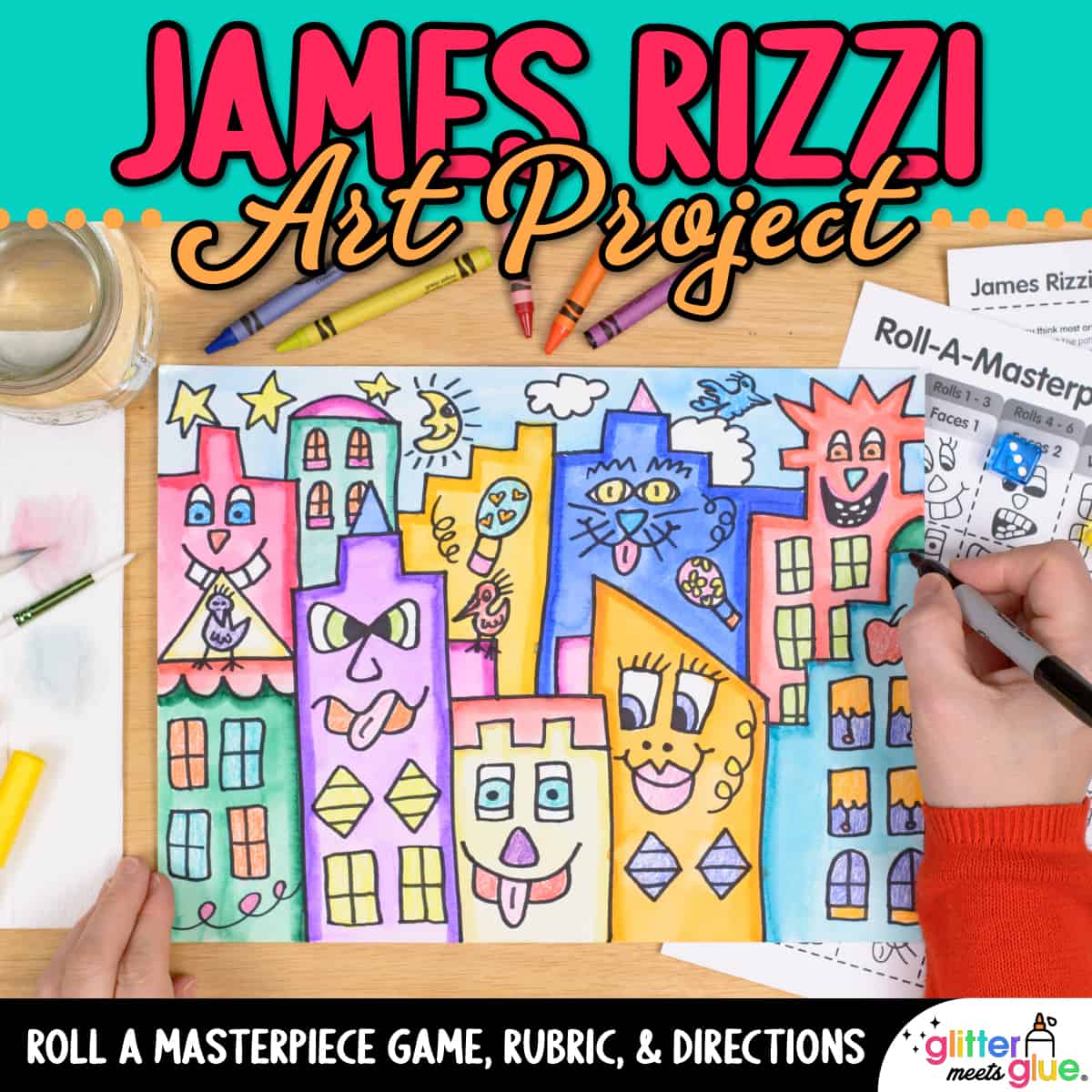
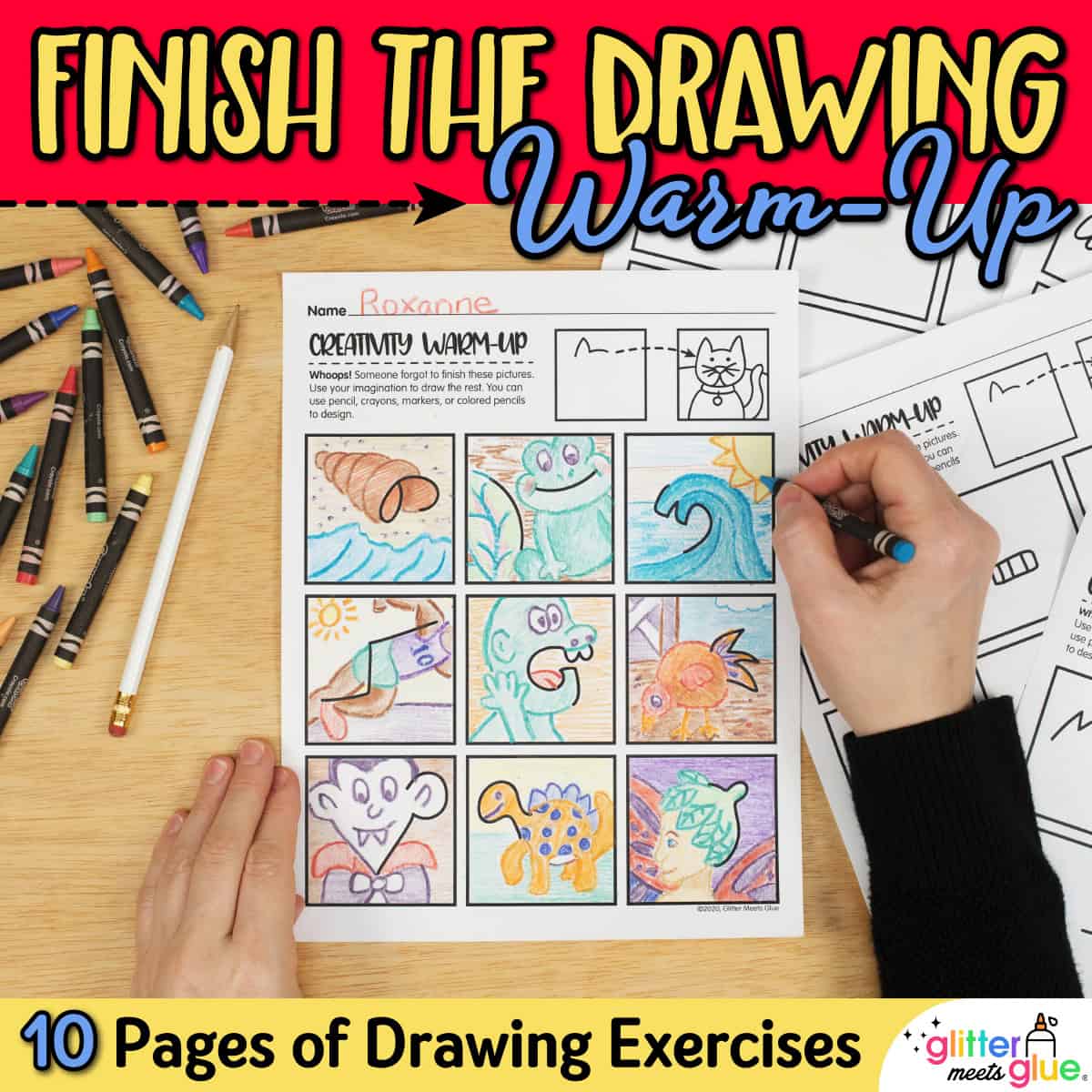
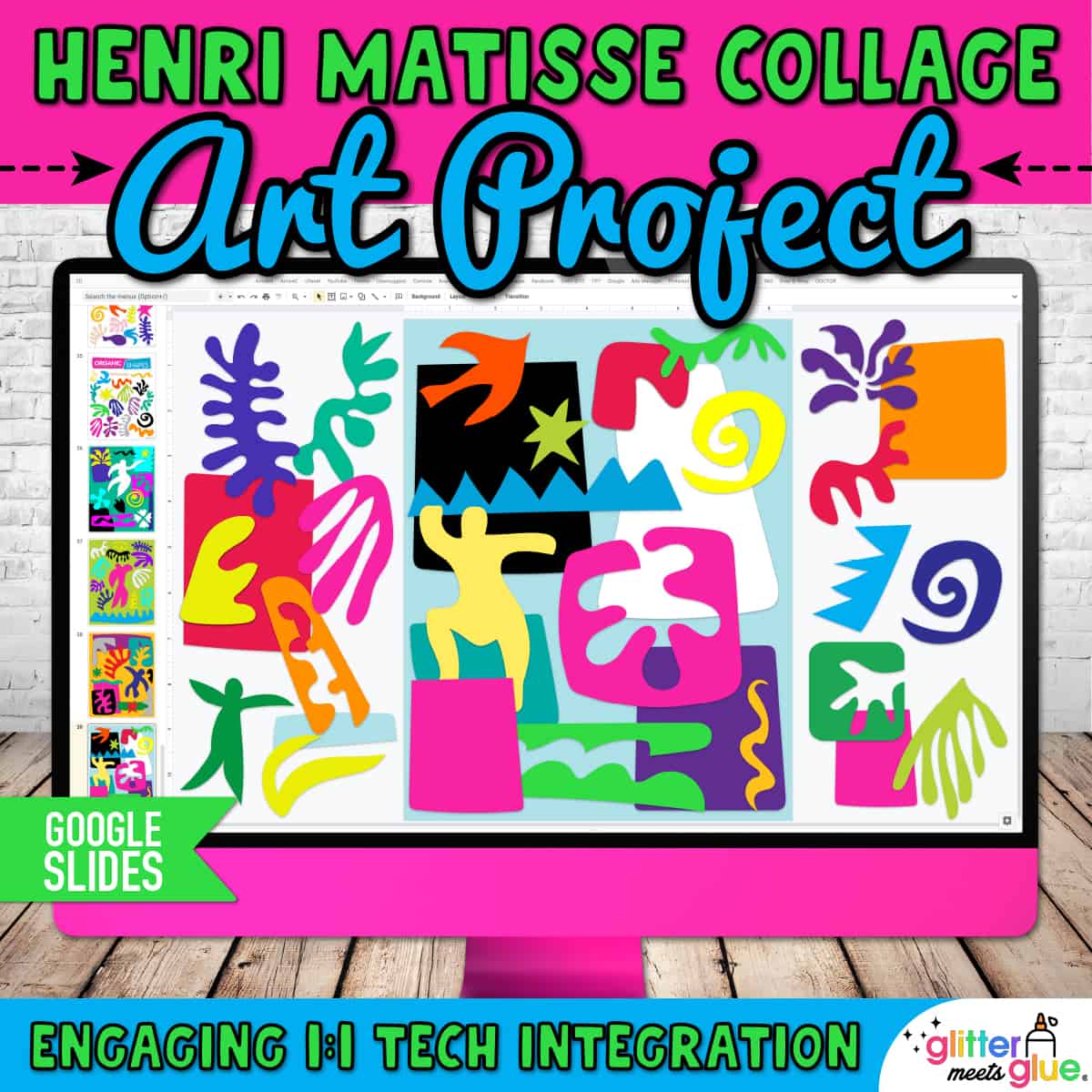
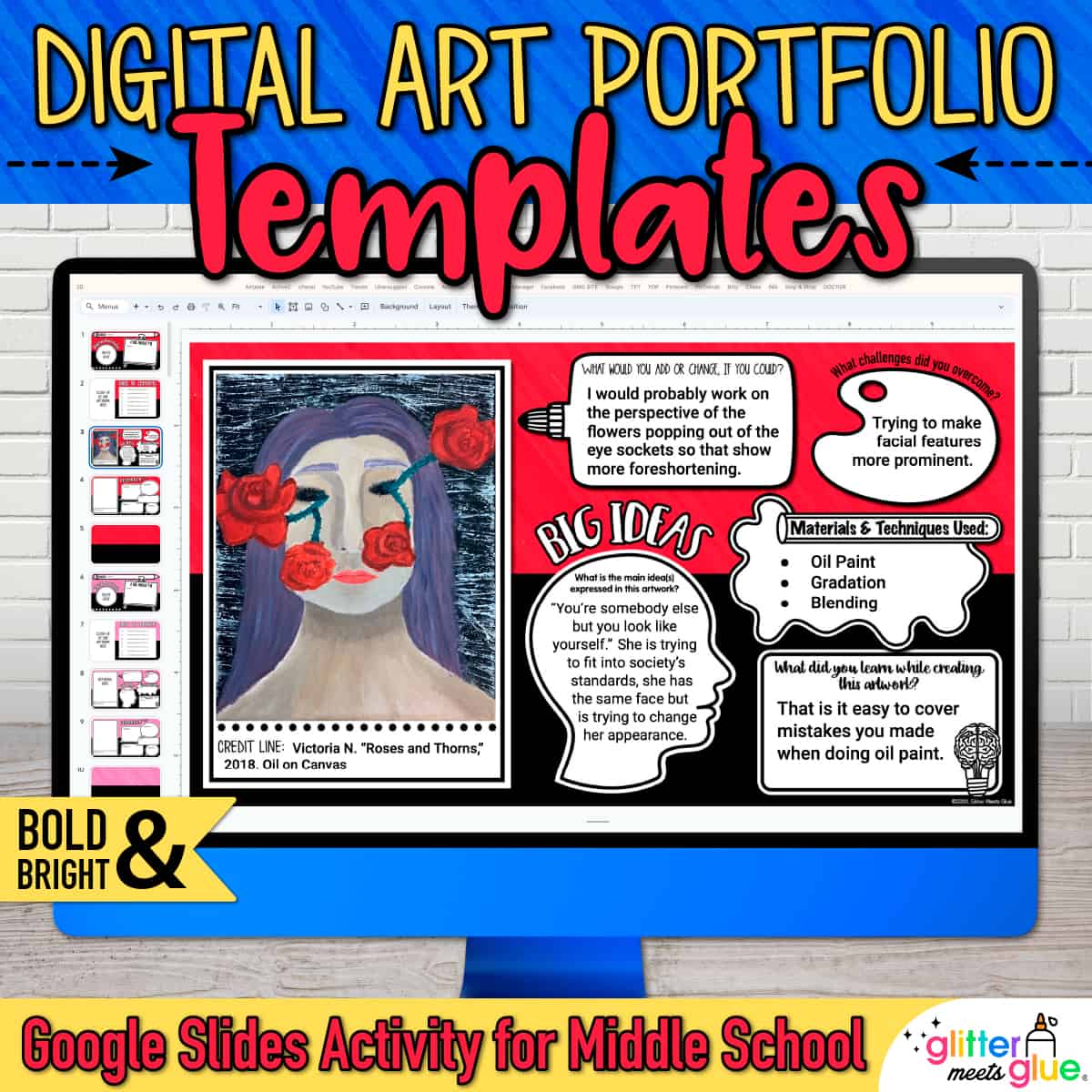
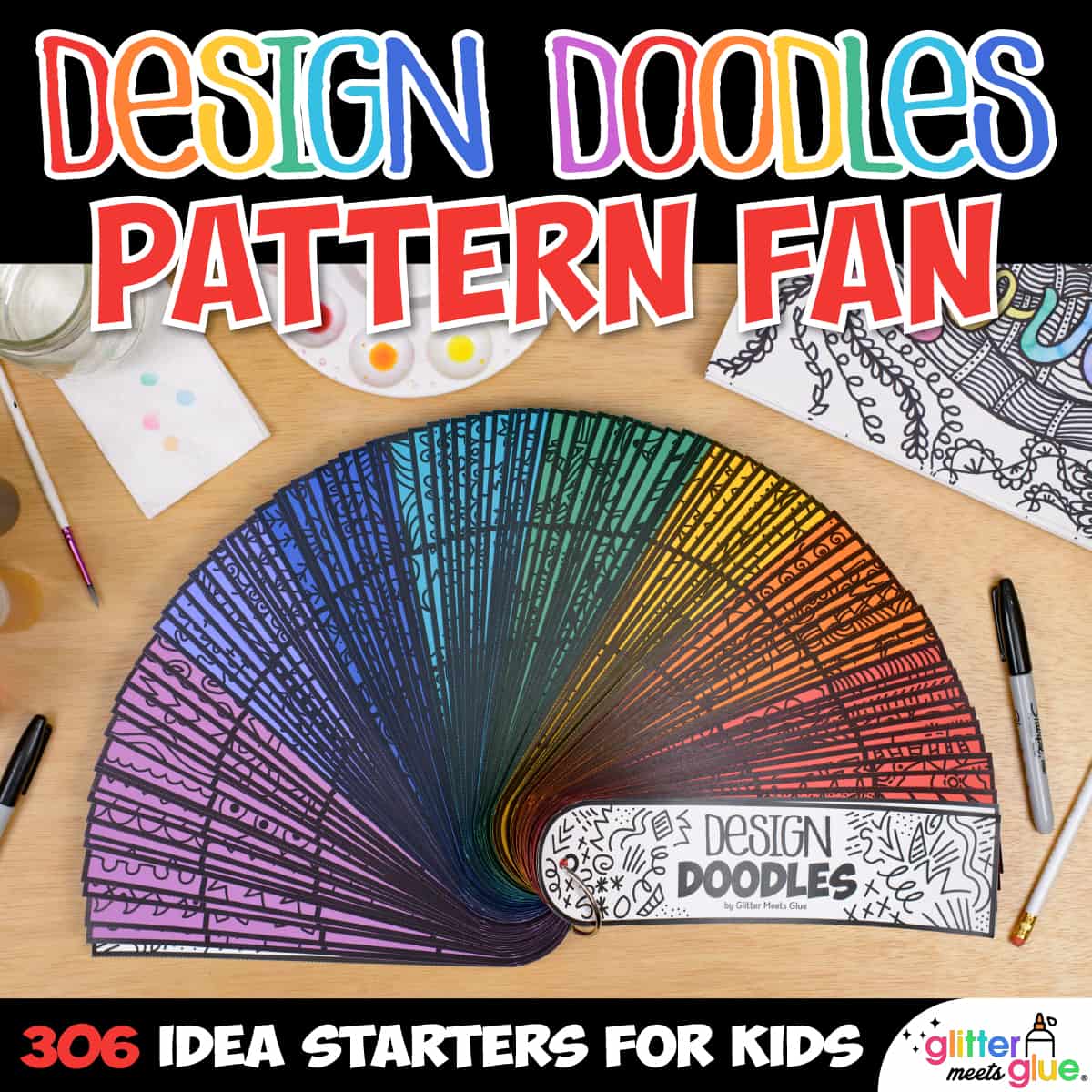

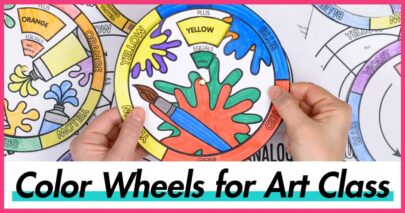
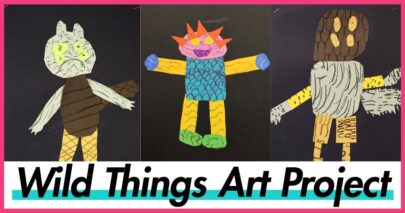
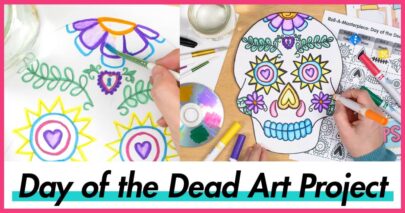
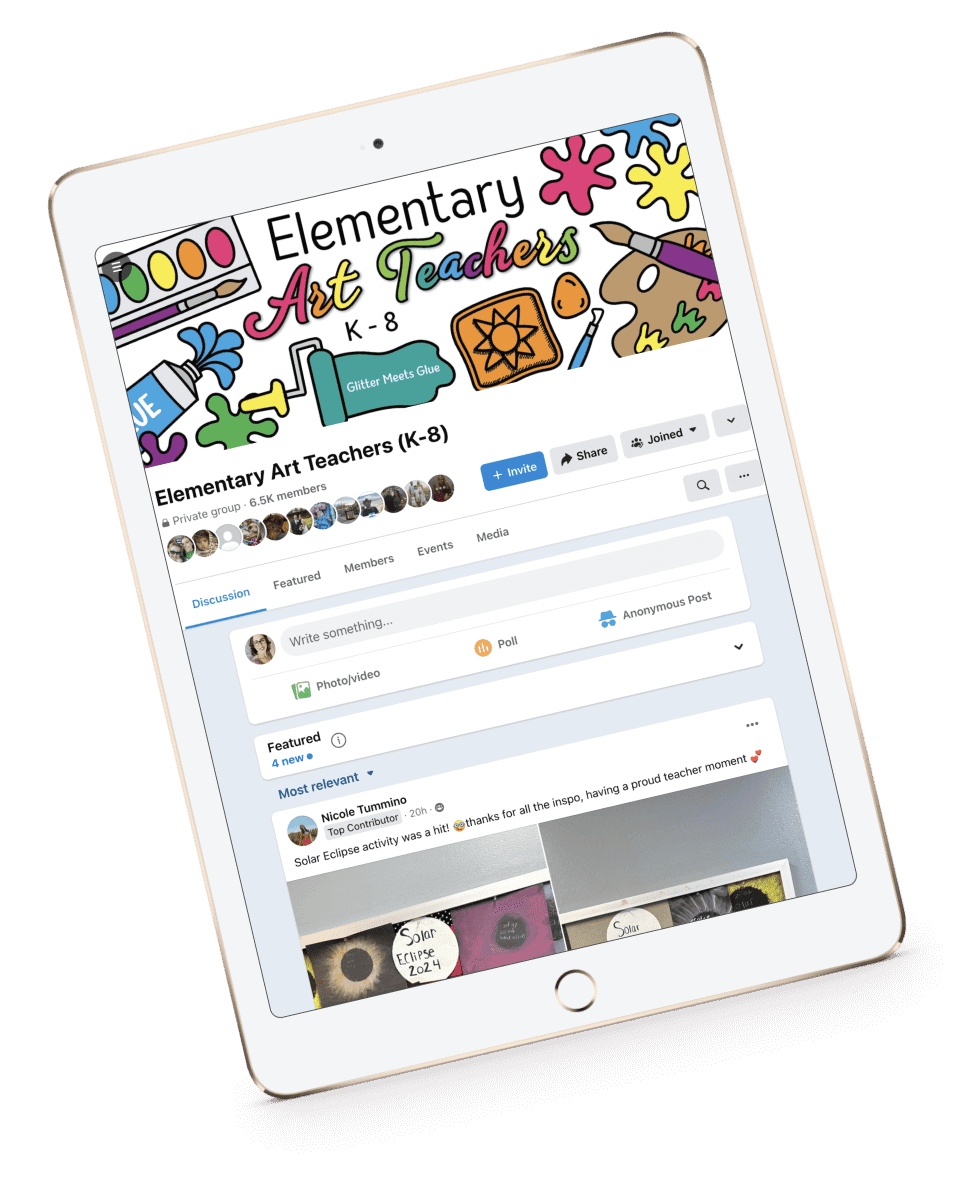

These are wonderful! Thank you!
Absolutely amazing and thank-you for the “best practices” ideas and perspectives…really helped ground my thinking
Thanks so very much for theese ideas. Ihave been getting very bored in this pandemic, Im going to try all theese out!! =(´w´)=
You’re very welcome!
About half an hour ago, I downloaded the Exit Statements Pack and saw these awesome ideas for ‘at home’ activities. I thought, these could come in handy some time. We have been so fortunate here in Western Australia and have been out of lockdown for months. Then I started getting texts from friends saying we are going to be in lockdown from 6pm tonight! School starts tomorrow! Thank you so much Amie, I feel a huge relief knowing I can start our school year, whenever that is, with these great resources.
Hey Marg, OHHH WOW! I can only imagine how you were feeling getting those texts! These are such uncertain times we’re living in. I’m happy I could provide you with some relief. Be safe and be well! P.S. I started on exit tickets for the principles of design months ago. I just have to get back to finishing them. They’re much harder than the elements, hence the slow down. 😄
You are AMAZING. I’m a first-year art teacher, teaching in person and online. These are all great ideas. Thank you for sharing!
Dear First Year Art Teacher! Oh boy, what a year to be a first year art teacher. Beyond just saying, “hang in there,” just know that what you’re likely experiencing is a mix of normal and unusual. It’s normal for kids to test you because they don’t know you. And they’re just feeling you out, seeing what you’re made of. Give yourself grace. You’re going to make mistakes. We all do. (((WE ALL DO))) It’s clearly unusual to have to teach in two different modalities. Do the best you can. It WILL get easier over the years, especially once pandemic teaching is done. Be safe and be well, Amie
Thanks for the great ideas.
These ideas are amazing! I homeschool my 3 daughters and we will definitely be doing most of these this month, thank you so much for posting this!
This is AMAZING! We started homeschooling our then 6 year olds about a year and a half ago. I’ve been feeling guilty because I know that we’d like for them to learn a little of an art foundation to help develop some appreciation of it, but I am SO out of my depth. Your projects are great ideas and make the topics not seem so daunting. Thank you!
Excellent resource! I will be teaching in person and virtual. My hope was to be able to keep lessons similar at least (for my sanity). Reading this made me feel soooooo much better. I’m good now! 🙂
Jessica, I’m so happy to hear anything I said put you at ease!
I am currently sharing your site with all (hundreds) of art teachers in our district. Our elementary teachers are in charge of students at home and in class, so we’re a little nervous. I am hoping that your ideas will help them as much as they did me. 🙂
Thanks, I really appreciate it, Jessica!
Very clear and helpful! Thank you:)
Nice! Thanks for these great ideas.
You’re welcome!
Great ideas
Thanks, Karen!
Thank you for these wonderful ideas!
You’re very welcome!
Thank you so much for sharing! Other teachers have PLCs to develop and share lesson plans, rubrics, assessments, and more. As art teachers we generally just develop it all on our own! I know I have for over 20 years! It is great to have found a special person like you who is also willing to share! It is so very appreciated!!! I have learned a lot during this pandemic and a great deal of it has been thanks to you! I wish I could give you a medal or at least a hug, but I guess we’ll have to settle for a virtual elbow bump! Thanks so much for all you do!
Oh my gosh, what a great way to start the day. Thank you! I’m so glad I’ve been of services to you. 😀 (((elbow bump)))
These are wonderful, but I especially love the laundry basket masterpiece! Thank you.
Thank you soooo much! I am pretty sure we will be doing a blended, if not all on-line teaching platform for this new school year. As an art teacher, and for all teachers, this comes with so many new challenges. I really appreciate the low-tech, low material lessons you presented here. I would, as I’m sure many others would also, love to see more of this! It really helps to take out a lot of the stress and coming up with original ideas. Share more of you can- be well!
And if not, I think every teacher will be required to have distance learning plans in place. I think everyone should expect it. That’s why I’m encouraging teachers who are presenting their lessons in Google Slides to organize them like they would their lesson plans and have them ready to go. You stay safe, too!
I like all of the bright ideas! Thank you it is very help full.
Thanks for your wonderful projects.
Clara
My Special Needs Highschool student is taking a Partners in Art class. He has to turn in 10 art projects of his choice. Thank God for art teachers like you that are willing to share!
Thank you for sharing these wonderful ideas. These will be so helpful.
really helpful! thank you:)
Thank you for taking a moment to leave a comment. Brightens my day!
Thank you for this post!! I have enough art projects to incorporate until the end of the year with these ideas.
You’re very welcome!
Thank you for the awesome ideas and also guidance with regards to expectations from the students. Art teaching in South Africa
Absolutely wonderful ideas! Thank you so much!
Absolutely wonderful ideas! Thank you so much!
Resources are sometimes scarce in Zimbabwe, and these are great for using at the children’s homes!
You’re very welcome!
This is fantastic! Thank you.
You’re very welcome, Carolyn!
Merci beaucoup cela me donne des idées supplémentaires pour mes élèves. J’aime beaucoup la réalisation avec des objets du quotidien….
Je suis heureux que cela vous ait aidé!
Thank you so much 😀🎨
These are such great ideas, I knew I was on the right track about my thought process when creating my lesson plans. Thanks so much for sharing! Be well!
You had it all along, Dalia. <3 You be well, too!
Wow! Thank you so much for sharing so many awesome ideas!
You’re very welcome!
Thank you so very much for sharing these great ideas!
Excellent resource.
Thank you!
Thank you for your well thought out ideas. Due to the coronavirus epidemic I am this year having to work from home like most people and adjusting to provide art activities that children can access is challenging., particularly with regard to materials.